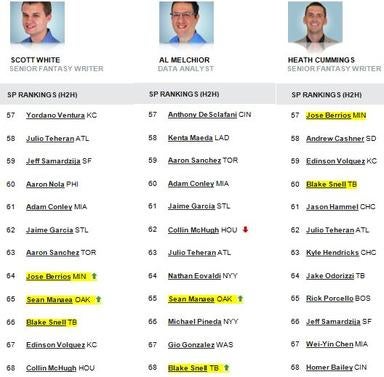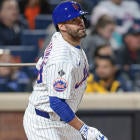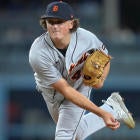Note: Don't whiff on this special FanDuel offer. Win your first contest or get your money back (up to $10) to keep playing. Try FanDuel now!
A little game theory.
No, wait -- a little psychology. No, wait -- a little game theory based on psychology. Yeah, that's it.
The subject is prospect callups, specifically pitchers. The timing is opportune because we've just seen a bevy of them over the last week.
And for most of them -- all but Aaron Blair and Michael Fulmer, by my count -- one of us analyst types delivered a standalone column urging you to pick him up as if he's the answer to all your hopes and prayers.
Dirty secret: He's most likely not the answer to all your hopes and prayers.
Sometimes, that little detail gets lost in all the hype and hoopla, which opens the door to feelings of pain and anger, of betrayal and mistrust. And yet the hype and hoopla continues for every prospect of a certain stature.
What stature is that? It's based on perception, really, or how we think the Fantasy-playing community will respond to said call-up. And several factors contribute to that: how high he ranks on all the top prospect lists, how owned he already is and just generally how high-profile he is. What plays a surprisingly minimal role is how good we think he'll be.
Pretty sneaky, right?
It's not intended to be, and that's why I'm taking this opportunity to pull back the curtain and reveal to the world the naked mind of the Fantasy analyst, where all thoughts are directed toward helping you play this silly little game of ours even better.
Yes, part of that is playing make-believe scout to your make-believe GM, but somewhere in all the role-playing, we can lose sight of the fact that all of these players at our disposal -- the prospects and non-prospects alike -- are basically just game pieces.
You know chess, right? You have the indispensable pieces -- the knights, rooks, bishops and, of course, the queen. Then, you have everyone else -- the pawns, abundant and disposable. A prospect is like the pawn that's one little space away from reaching the end of the board. For the moment, yeah, he's just as replaceable as the rest, but this pawn has potential. If this next turn goes right, he becomes a second queen. And that potential makes him infinitely more valuable than the pawn back at the starting position.
Maybe the opposition stops him and he never reaches the end, but we have no way of knowing whether he's Noah Syndergaard or Trevor Bauer, whether he's Mike Trout or Byron Buxton, until we see that turn play out. All we know is that, for right now, he's right there.

By adding Blake Snell, Jose Berrios, Sean Manaea or whoever comes next, you're not picking up a good player, per se. You're picking up the opportunity for a good player. If he doesn't pan out, as long as you didn't sacrifice one of those knights, bishops or rooks to get him, oh well. No big loss.
And most every Fantasy roster has a dispensable pawn or two.
OK, but what about perception? That's the variable that this analogy doesn't address. If the Blake Snells of the world are like the pawn one space from the end of the board, then the Michael Fulmers are the pawns two or three spaces away. They could become indispensable game pieces themselves, but it's lower-probability and, more importantly, lower-priority for your competition.
All eyes are on the pawn that's one space away -- he's not slipping by anyone -- so if you have your chance at him, you better take it. But the other ... eh, what's the rush? Maybe he puts together a couple dominant starts and moves up another spot on the hypothetical game board, entering plain sight and appearing on every Fantasy owner's radar. That's when you make the move for him. For now, you have bigger fish to fry.
Because if this last week has taught us anything, it's that you never know when Tyler Glasnow or Lucas Giolito or Trea Turner or A.J. Reed will get the call. Those, dear friends, are queens-in-waiting.
Gosh, I hope you've played chess before.






















